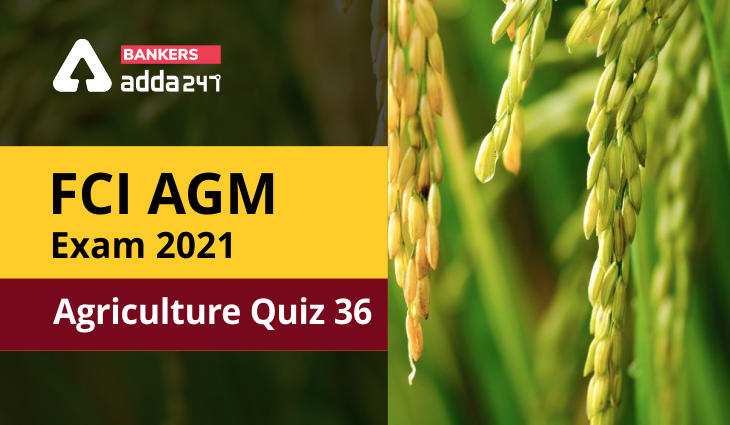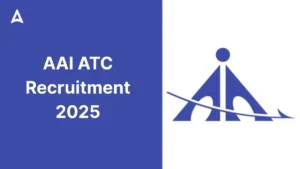FCI Recruitment 2021: Good News for all the aspirants, Bankers Adda team is coming up with Exclusive Questions of Agriculture for FCI AGM 2021 on the Adda247 app also, so download the Adda247 App now to attempt these quizzes. We have started this series on 18th March 2021. So, do attempt it daily and crack the FCI AGM 2021 Exam.
Q1. Which method of irrigation is developed in Israel and well suited in acute water shortage?
- Rain type irrigation
- Drip/Trickle irrigation
- Check basin irrigation
- Surge irrigation
- None of these
Explanation:- Drip irrigation, a method of irrigation where water is delivered directly to the plant roots through a network of tubes and valves, is a highly water-efficient method that gives a high yield per unit area.
Q2.Which of the following soil conservation measure is the most popular in India?
- Bench terracing
- Contour bunding
- Contour strip
- All of the above
- None of these
Explanation:- Contour bunding is a proven sustainable land management practice for marginal, sloping, and hilly land where the soil productivity is very low. It is widely adopted by the ethnic minorities of Nepal who practice the shifting cultivation system of farming.
Q3. How many agro-climatic zones are found in India?
- 15
- 54
- 17
- 64
- None of these
Explanation:- The Planning Commission has categorized 15 agro-climatic zones in India, taking into account the physical attributes and socio-economic conditions prevailing in the regions.
Q4. Which type of erosion is the most highly visible?
- Gully erosion
- Wind erosion
- Rill erosion
- Splash erosion
- None of these
Explanation:- In cultivation or pastures, advanced rill erosion can develop into gully erosion. This type of erosion is highly visible and affects soil productivity, restricts land use, and can damage roads, fences and buildings.
Q5. Major deposits of Gypsum are found in
- Rajasthan
- Bihar
- Madhya Pradesh
- Karnataka
- None of these
Explanation:- In India, gypsum mining is mainly carried out in the state of Rajasthan, which contributes about 99% of the total production; the remaining 1% is contributed by Jammu and Kashmir and Gujarat.
Q6. The Law of Diminishing Return was given by
- Spillman
- Mitcherlich
- Juston von Liebig
- Schofiled
- None of these
Explanation:- On the other hand, Mitscherlich’s Law of Diminishing Returns states decreasing marginal productivity as levels of the limiting factor are raised. According to this law, plants cannot grow indefinitely and there is a maximum of production.
Q7. What is the pH of saline soils?
- <7.5
- <6.5
- <9.5
- <8.5
- None of these
Explanation:- The pH of saline soils is usually below 8.5. Because soluble salts help prevent dispersion of soil colloids, plant growth on saline soils is not generally constrained by poor infiltration, aggregate stability, or aeration.
Q8. Important pulse crop of India is
- Red gram
- Gram
- Blackgram
- Green gram
- None of these
Explanation:- The major pulse crops in India include Bengal gram (chana) or chickpea, red gram (arhar) or pigeon pea, green gram (moong), black gram (urad), and lentils (massar). Moth bean, Lathyrus, horse gram, peas, and red kidney beans are the other pulse crops produced and consumed in India.
Q9. Productivity of rice is highest in
- Andhra Pradesh
- West Bengal
- Punjab
- Haryana
- None of these
Explanation:- West Bengal ranks no. 1 with a total rice production of 146.05 lakh tons. It is the highest rice-producing state in India with a yield of 2600 kilograms per hectare.
Q10. Green revolution has been most successful in
- Sugarcane & Potato
- Onion & Tomato
- Wheat & Rice
- Rice & Pulse crop
- None of these
Explanation:- Green revolution, the great increase in production of food grains (especially wheat and rice) that resulted in large part from the introduction into developing countries of new, high-yielding varieties, beginning in the mid-20th century. Its early dramatic successes were in Mexico and the Indian subcontinent.
Also Attempt:




 GA Capsule for SBI Clerk Mains 2025, Dow...
GA Capsule for SBI Clerk Mains 2025, Dow...
 The Hindu Review October 2022: Download ...
The Hindu Review October 2022: Download ...
 AAI ATC Exam Date 2025 Out, 309 Junior E...
AAI ATC Exam Date 2025 Out, 309 Junior E...


